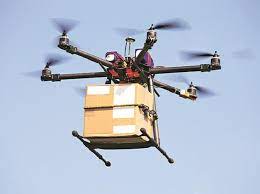Grounded Dreams: Unraveling the Challenges Hindering Drone Delivery's Flight to Success
In recent years, the concept of drone delivery has captured the imagination of many, promising a futuristic solution to revolutionize the way we receive goods. However, despite the hype and advancements in technology, drone delivery services are still struggling to take off and integrate seamlessly into our society. description.
12/29/20232 min read


In this article, we'll explore the key challenges that have grounded the dreams of widespread drone delivery adoption.
1. Regulatory Hurdles:
One of the primary obstacles preventing the widespread adoption of drone delivery services is the complex regulatory landscape. Governments worldwide are grappling with establishing clear and comprehensive regulations for unmanned aerial vehicles. Issues such as airspace management, privacy concerns, and safety standards pose significant challenges. Striking a balance between innovation and public safety remains a delicate task, and until regulations are standardized and universally accepted, the drone delivery industry will continue to face headwinds.
2. Technological Limitations:
While drones have evolved rapidly in terms of capabilities and functionalities, they still face technological limitations that hinder their widespread adoption. Short battery life, limited payload capacity, and the inability to operate in adverse weather conditions are just a few of the challenges drones must overcome. Until these technological hurdles are adequately addressed, the feasibility and reliability of drone deliveries remain questionable.
3. Public Perception and Privacy Concerns:
Despite the potential benefits of drone delivery, public perception remains a significant barrier. Concerns about privacy invasion, noise pollution, and fears of accidents or misuse contribute to a general skepticism towards embracing drones in everyday life. The challenge lies not only in addressing these concerns but also in effectively communicating the benefits and safety measures associated with drone delivery to gain public trust.
4. Infrastructure Challenges:
Establishing a robust and efficient infrastructure for drone delivery is another stumbling block. While companies are working to create drone ports and landing stations, integrating these facilities seamlessly into existing urban landscapes is a complex task. Additionally, the need for advanced communication networks and real-time tracking systems poses challenges that require substantial investments in infrastructure development.
5. Cost Implications:
While drone technology has become more accessible, the initial investment and ongoing operational costs associated with drone delivery services can be prohibitive. Companies must navigate the delicate balance between making their services affordable for consumers and ensuring profitability. Until a sustainable business model is established, the widespread adoption of drone delivery will remain elusive.
Conclusion:
The dream of a world where drones seamlessly deliver packages to our doorsteps is undoubtedly appealing. However, the road to realizing this vision is fraught with challenges ranging from regulatory hurdles and technological limitations to public perception and infrastructure development. As innovators and regulators work collaboratively to address these issues, the potential of drone delivery remains tantalizingly close but just out of reach. Only time will tell whether these challenges can be surmounted, allowing drone delivery to finally take flight in our society.
Aerogrit Sdn Bhd (1547412-H)
Level 3, Wisma Suria, Jalan Teknokrat 6, 63000 Cyberjaya, Malaysia
+60111 099 4567
hello@aerogrit.com
© Aerogrit Sdn Bhd | Cyberjaya, Malaysia
